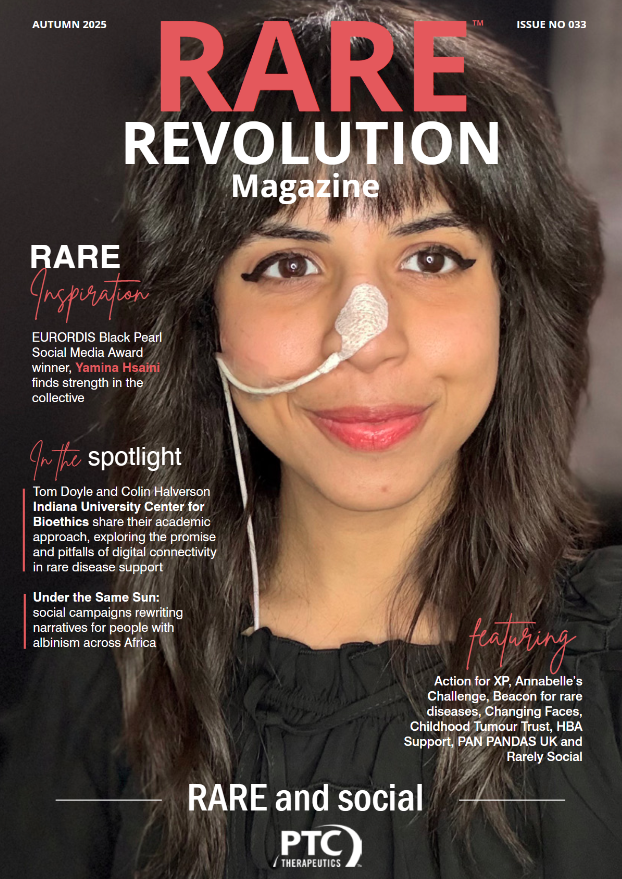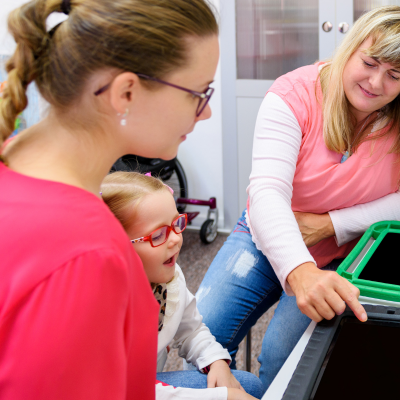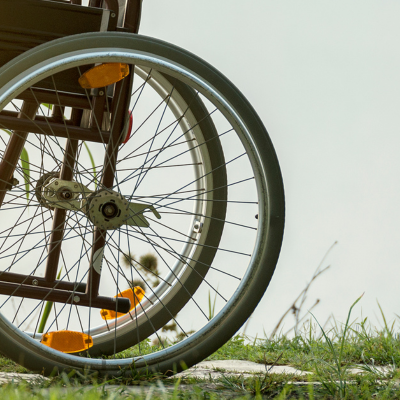Rett syndrome – condition overview and infographic
FUNDED BY ACADIA PHARMACEUTICALS GMBH

What is Rett syndrome?
Rett syndrome is a rare, severe neurodevelopmental disorder that primarily affects females* and is caused by mutations in the MECP2 gene on the X chromosome. Typically, girls with Rett syndrome develop normally for the first 6–18 months before experiencing a loss of acquired skills such as speech and mobility, along with distinctive symptoms like stereotypic hand movements (repetitive wringing), developmental delays and autonomic dysfunction (including difficulties with breathing and temperature regulation). The condition can also involve feeding difficulties, scoliosis (curvature of the spine), and other health complications like frequent urinary tract infections, constipation and gallstones. Epilepsy is a common associated comorbidity. Lifelong, multidisciplinary support is required to manage the complex needs that accompany a diagnosis of Rett syndrome.
*While extremely rare, it is important to note that boys can be affected by Rett syndrome, although in many cases this is fatal before, or to within days of, birth.
Most cases of Rett syndrome are genetic but largely not inherited (less than 1% of cases are inherited).¹ As such the likelihood of having more than one child with the condition is very small (less than 1 in 100).²
Rett syndrome affects roughly 1 in 10,000 to 15,000 females born globally. In boys, the disease is considerably less common.³
Signs and symptoms
Onset & transition: timing varies more than expected
Stage I (early stagnation) tends to begin ~6‑18 months, but in many recent cases symptom onset (especially regression) was identified around 15 months and diagnosis may lag significantly, shifting how “Stage II” is recognised.⁴
- low muscle tone and mobility problems
- difficulty feeding
- unusual, repetitive hand or jerky limb movements
- delay in speech development
- lack of interest in toys
Stage II: regression duration and severity highly variable
Some children lose skills rapidly; others more gradually. The age at which maximum loss occurs differs. Severity of mutation, comorbidities (epilepsy, scoliosis), and early access to therapy may modulate how deep the loss is and how long it lasts before plateauing.
- the loss of purposeful hand movements
- periods of distress and irritability
- disinterest in people and eye contact avoidance
- unsteadiness and awkwardness when walking
- problems sleeping
- slow head growth (not tracking with peers)
- difficulty eating and sometimes constipation
- problems with heart rate or heart rhythm
Stage III: pseudostationary / plateau is not uniformly stable
Even in stage III, fine motor, social interaction, and communicative abilities decline with increasing age.⁵
Some domains (adaptive behaviour, daily activities) may remain more stable. Motor inability (loss of walking etc.) may worsen gradually during this stage; some individuals begin features considered “late stage” (like scoliosis or increasing dependence) during this plateau.
Symptoms at this stage can include:
- seizures
- irregular breathing patterns may get worse – for example, shallow breathing followed by rapid, deep breathing, or breath-holding
- spinal issues such as scoliosis
- development of epilepsy
Stage IV: late motor deterioration onset and progression are slow and mixed
Some older individuals (>30 yrs) do not show higher overall severity than younger ones, though particular features vary.⁶
otor deterioration (loss of mobility, increased scoliosis, contractures) tends to dominate here, but cognitive, communicative, hand use deficits may not worsen dramatically (or may even show small improvement or stabilisation) in some cases.
Interventions (rehab, physical therapy, posture training) can slow deterioration (as in scoliosis), and perhaps maintain motor functions longer than spontaneous decline would predict.⁷
Symptoms include: development of scoliosis, muscle weakness and inability to walk independently.
Usually, a genetic blood test can be used to identify if the genetic mutation is responsible for Rett syndrome. If a change is found in the MECP2 gene, it can help confirm the diagnosis, but failing to find it does not necessarily rule out the syndrome.⁸
There is currently no known cure for Rett syndrome.8
Management
People who live with Rett syndrome may require a multidisciplinary team and regular monitoring of physical changes, such as scoliosis, gastrointestinal issues and heart problems. Other disease management methods include occupational therapy, physical therapy, speech-language therapy and nutritional support.9
1,000 cases of Rett syndrome per year worldwide.9
References
[1] https://www.rettsyndrome.org/about-rett-syndrome/understanding-rett-syndrome
[2] https://www.nationwidechildrens.org/conditions/health-library/rett-syndrome-in-children#:~:text=Rett%20syndrome%20is%20a%20genetic,less%20than%201%20in%20100
[3] https://www.rettuk.org/what-is-rett-syndrome
[4] https://pubmed.ncbi.nlm.nih.gov/40608138
[5] https://pubmed.ncbi.nlm.nih.gov/35023562
[6] https://www.mdpi.com/2073-4425/15/8/1107?utm_source=chatgpt.com
[7] https://pubmed.ncbi.nlm.nih.gov/35160011
[8] https://www.nhs.uk/conditions/rett-syndrome
[9] https://www.rettsyndrome.org/about-rett-syndrome/understanding-rett-syndrome
Articles within this digital spotlight are for information only and do not form the basis of medical advice. Individuals should always seek the guidance of their medical team before making changes to their treatment.
This digital spotlight has been made possible with financial support from Acadia Pharmaceuticals GmbH. They have had no editorial control over the copy, and all opinions are those of the contributor.
RARE Revolution Publishing® retains all copyright.






